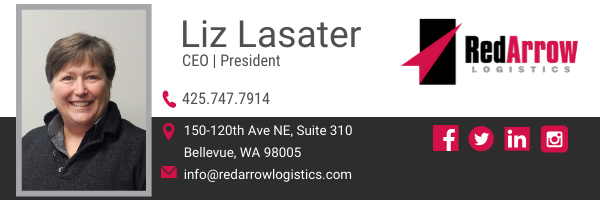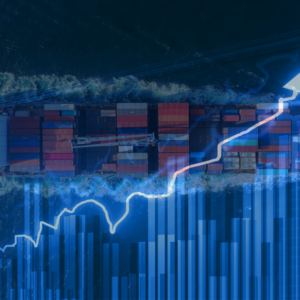Technology plays a vital role in the supply chain. Digitization has created a more efficient supply chain by allowing logistics managers to make more informed decisions. However, this is not to say that there are no disadvantages on relying too heavily on technology in the supply chain.
Why Technology is Needed
In a survey conducted in 2018, 21.8% of global supply chain managers interviewed stated that visibility was among their biggest challenges. Companies that produce goods were focused on having visibility with the raw materials to make their goods, while suppliers were concerned with the availability of the products they were going to sell. Both producers and suppliers wanted the ability to trace materials and goods throughout the supply chain.
Often criticized for being slow to adopt new technologies, the logistics industry has come to be reliant on the benefits that digitization offers. Supply chain managers use shared data and reporting to plan their production lines, manage inventory, and track shipments. In order to remain competitive, companies have had to embrace technological advances. A supply chain without complete visibility simply won’t survive in today’s market.
Technology is Not Perfect
Many logistics companies have adopted software as a service, or SaaS, as a way to digitize their supply chain. It is centrally hosted in the cloud and can be accessed over an internet connection. Instead of paying for an upfront software purchase, hosted solutions offer a monthly subscription fee for outsources system maintenance. There are many benefits of using this service such as lower costs and increased flexibility, but it is not a foolproof technology.
Using applications, or apps, is another way to increase the visibility in the supply chain, however, it comes with some precautions as well. As more people access data or work from a mobile device, this is becoming a more popular way to conduct business, but apps do require constant upgrades and maintenance to continue to function properly. Supply chain managers should be aware of the disadvantages of using these types of technology.
Disadvantages of SaaS and Apps
These types of technology do have downsides, although these may not be reasons entirely to not invest in the solution.
Lack of Control: In-house applications allow businesses to retain tight control over their operations, as compared to hosted solutions such as SaaS. Cloud-based solutions mean that a third-party will own and be handling the flow of data and reporting. A logistics company has very little control over how this is handled by the SaaS provider.
Efficiency: SaaS, in particular, can run at slower speeds than the in-house server applications. As the bandwidth of a SaaS service increases, there might be outages or downtimes when trying to access the dashboard. If the business really needs the system to be able to perform on-demand, there might be a lag time.
Security Concerns: The confidentiality of certain information may not be secure on hosted and cloud-based systems. Competitive information such as manufacturing methods or inventory management is now entrusted to a third-party. Any software service should have SSL encryption, administrator tools, and algorithms to generate keys to prevent hacking.
Limited Applications: SaaS is becoming more widely used, however, there are still many applications that don’t work with a hosted platform, which means that it could be limited in what it can do. For example, there may be specific applications that should remain in-house for these reasons because they have features that are must-haves for the business. Your business might have a better on-site solution that fits the needs of the business more appropriately.
Connectivity Issues: SaaS and Apps need an internet connection in order to function. Should the internet be interrupted or go out, potential loss of data is a concern. And, there will be no way to access the data until the internet connection is restored. The same is true if in an area with poor internet connection, for example, the inside of a warehouse, where most often data does need to be accessed. The distance between the user and server does affect the speed of connectivity.
Cost: Of course, the cost is always a consideration when researching new software applications. Apps can be expensive because the more functionality they have, the more they can cost and the more involved each update becomes. With SaaS, the cost of the solution is not only the monthly subscription fee. There might be additional support, setup, or integration charges that are necessary for the solution to be functional for your business.
Should My Business Invest in Apps or SaaS?
Each application should be evaluated individually to determine whether it should be moved to a cloud-based system. It is up to the supply chain executives to ensure that the technology meets their business’s needs, without losing any of the personalized services they can give to clients. Before choosing a provider, research their performance and reviews.
Keep in mind that technology cannot fully replace the service and relationships that people can. Supply chain managers should use a healthy balance of contact and technology to keep processes running smoothly.
Your Trusted Partner
Red Arrow provides expertise and white glove customer service with fast-growing, complex, and high-value supply chains. As the next-generation model of logistics companies, Red Arrow offers tailored transportation and logistics solutions — from single shipments to complex over-dimensional and international orders.
Red Arrow offers the scale and scope of services including air, ocean, and ground transportation to meet the budget and schedule requirements of the largest and smallest companies alike. If we can be of assistance, please email us at info@redarrowlogistics.com or give us a call 425-747-7914.





